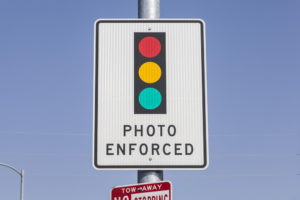Texas Gov. Greg Abbott is on record saying he believes the state ought to yank cities’ authority to deploy red-light cameras at dangerous intersections.
Amarillo has responded to that declaration by increasing the number of cameras it has posted around the city from nine to 12.
Take that, Gov. Abbott!
I remain a supporter of the technology that the city uses to assist in catching red-light runners in the act of breaking the law.
The city is going to add seven cameras at intersections, while removing four cameras from other intersections. Thus, the city is continuing to use the technology to assist the police department. Moreover, the city is upgrading red-light camera assemblies at five intersections.
So, what does that mean for the future of the technology? I suppose you can say it lies in the hands of the Texas Legislature. Amarillo has two House members representing the city: Republicans John Smithee and Four Price; it also has a state senator, Republican Kel Seliger, who managed to make some news in recent days because of his dispute with Lt. Gov. Dan Patrick.
What do these three men believe about the red-light cameras? I haven’t asked them directly. Maybe I will, even though I no longer live in Amarillo.
I don’t see any such cameras on the job in Collin County, where my wife and I now live. I don’t see them in Fairview, or Allen, or McKinney or in Princeton — where we’ll be moving into our new home quite soon. I would not object to any city in Collin County deploying these devices. The way I figure it, if it deters red-light runners then they are doing their job.
As for Amarillo’s red-light cameras, consider this little tidbit: Texas Department of Transportation officials say that the three intersections where the cameras are being removed recorded just four collisions from July 2016 to the end of June 2017. They are heavily traveled thoroughfares, so I am going to presume that the cameras did their job.
Cities should be allowed to determine for themselves whether or where to deploy these devices. They don’t need Bigger Brother looking over them.

